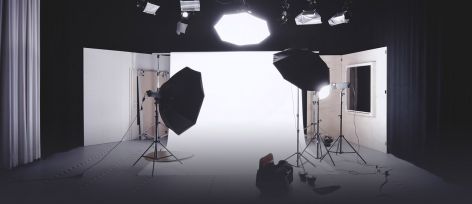Confusion about the image resolution in digital photography
No images class present in patternizer
There are many terms, factors and issues that are confusing in digital images, but surely Surely the one which causes the most trouble is pixels per inch.
First of all, we should clarify the abbreviation that is usually given to this feature of the digital image. “Pixels per inch” is abbreviated with the acronym PPI. What is wrong is to call it DPI, because this means Dots Per Inch, and refers to the resolution of a printer.
PPI is commonly thought to determine the quality of the image, so if you have a picture at 300 PPI it will have more quality than the another at 72 PPI, but this is not true. What really determines the quality or resolution of a digital image is its size, equaling width x height measured in pixels. For example, a photo of 2000 x 3000 pixels (Such as the one obtained from a 6 megapixel camera). This picture can be set at 72 PPI, 150 PPI or 300 PPI and quality would be exactly the same. So ... What does PPI determine? As the name suggests, the PPI are the pixels that are included in every inch, but when you print the image. Returning to our picture of 2000 x 3000 pixels, if it is printed at 100 PPI means that every inch printed will have 100 pixels. That means the resulting picture will be 30 inches long (76.2 cm). If instead we print the photo at 300 PPI, it will be 10 inches long (25.4 cm). At 300 PPI the details of the photo would look better, but the picture will be smaller.
The resolution (PPI) is a feature of the image that can be changed as often as you want with an image editing program and it wouldn’t lose any quality (as long as we don’t save the photo in a compressed format). Keep in mind that PPI is only a mathematical ratio that indicates how to group the pixels of the image.
No images class present in patternizer
Be careful: Some programs such as Photoshop, by default, are set to automatically resize the image when you change the resolution setting PPI to maintain the same print size after the change: it adds more pixels (invented) when we increase the image resolution, or eliminates part of them if we reduce the resolution.
And what resolution (PPI) is good enough to get good printing quality, that is, photo quality? This depends on the technology we use for printing. In lambda prints (photochemical, found in present day photo labs), to have the photo in 220 PPI would be enough. In a good inkjet printer, we would need about 240 PPI. And offset printing normally requires 300 PPI (Although it is a technology that does not reach the same quality as ink jet).
What about viewing the photos on a monitor or uploading them to the internet? There would not be any difference at all. As long as we do not change the physical size (width to height) of the photo, the resolution (PPI) will not have any influence at all on the quality of the picture on a screen or on the Internet. We can put it at 72, 300, 15 or 1200 PPI, and it will look exactly the same.
No images class present in patternizer
Thus, the concept of "resolution " is always linked to the size or format in which the image is displayed. An image can be printed with 300PPI on paper with 15x25 cm and it will have good photo quality. However, the same image could be printed as large as to cover a building if done with a resolution as low as 10 PPI, but obviously it would not have good photo quality (and it wouldn not be necessary becase these print sizes are watched from afar).
Finally, we will explain what are the DPI or dots per inch are, and what is the difference between them and the pixels per inch or PPI. The DPI, as we mentioned earlier, indicate the resolution at which a printer prints. What an inkjet printer does is generate a multitude of small dots of color which combine to create the printed image. An image will have more or less resolution depending on how many dots the printer is able to squeeze in an inch. The photo is generally considered to have good quality when the printer reaches 1440 or more dots per inch(DPI).
No images class present in patternizer

